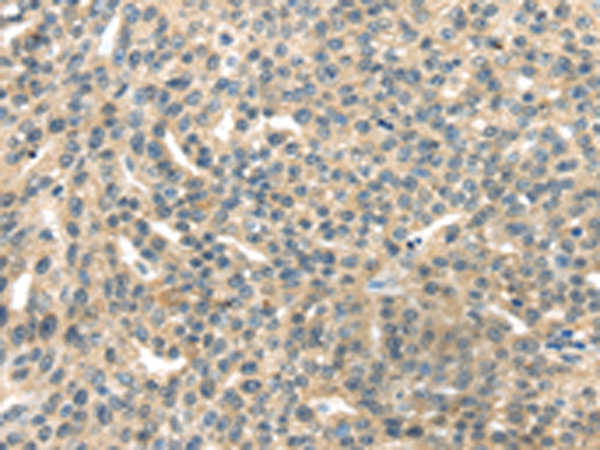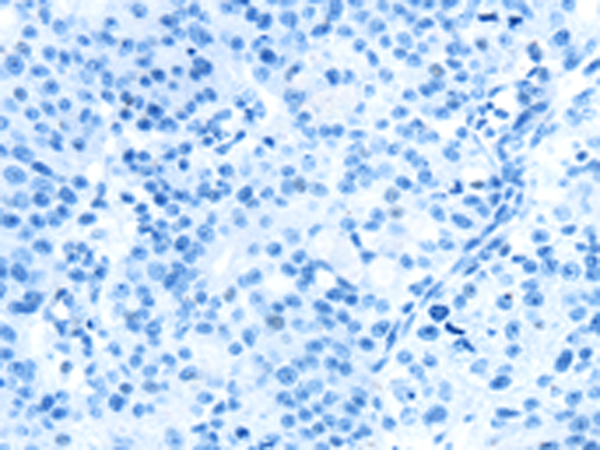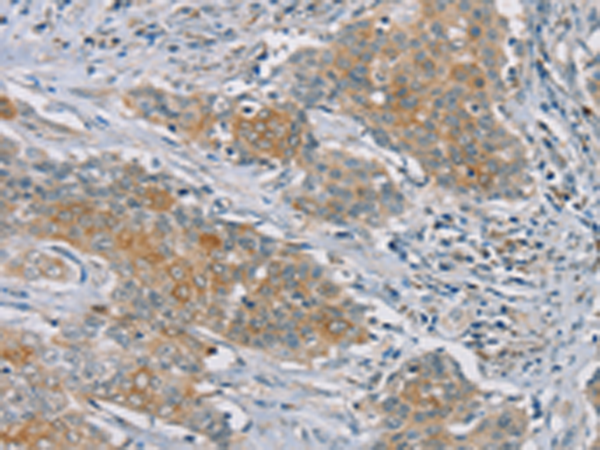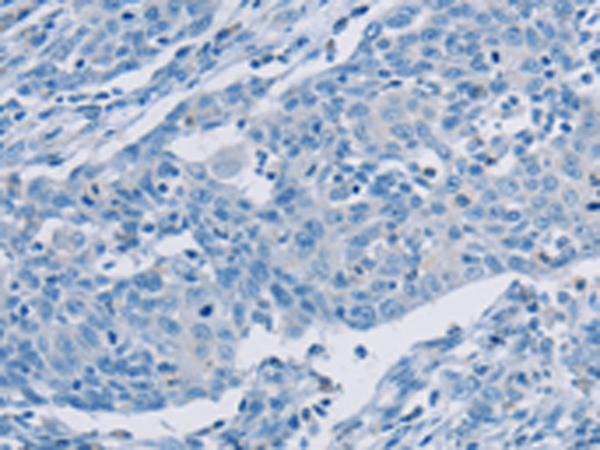| 货号: S214618 |
| 产品全名: RASA2 兔多抗 |
| 基因符号 GAP1M |
| UNIPROT ID: Q15283 (Gene Accession – NP_006497 ) |
| 背景: The protein encoded by this gene is member of the GAP1 family of GTPase-activating proteins. The gene product stimulates the GTPase activity of normal RAS p21 but not its oncogenic counterpart. Acting as a suppressor of RAS function, the protein enhances the weak intrinsic GTPase activity of RAS proteins resulting in the inactive GDP-bound form of RAS, thereby allowing control of cellular proliferation and differentiation. This particular family member has a perinuclear localization and is an inositol 1,3,4,5-tetrakisphosphate-binding protein; a compound suggested to function as a second messenger. |
| 抗原: Synthetic peptide of human RASA2 |
| 经过测试的应用: ELISA, IHC |
| 推荐稀释比: IHC: 50-200; ELISA: 2000-5000 |
| 种属反应性: Rabbit |
| 克隆性: Rabbit Polyclonal |
| 亚型: Immunogen-specific rabbit IgG |
| 纯化: Antigen affinity purification |
| 种属反应性: Human, Mouse, Rat |
| 成分: PBS (without Mg2+ and Ca2+), pH 7.4, 150 mM NaCl, 0.05% Sodium Azide and 40% glycerol |
| 研究领域: Signal Transduction |
| 储存和运输: Store at -20°C. Avoid repeated freezing and thawing |

Immunohistochemistry analysis of paraffin embedded Human esophagus cancer tissue using 214618(RASA2 Antibody) at a dilution of 1/45(Cytoplasm). | 
In comparision with the IHC on the left, the same paraffin-embedded Human esophagus cancer tissue is first treated with the synthetic peptide and then with 214618(Anti-RASA2 Antibody) at dilution 1/45. | 
The image on the left is immunohistochemistry of paraffin-embedded Human ovarian cancer tissue using 214618(Anti-RASA2 Antibody) at a dilution of 1/45. | 
In comparision with the IHC on the left, the same paraffin-embedded Human ovarian cancer tissue is first treated with synthetic peptide and then with D162111(Anti-RASA2 Antibody) at dilution 1/45. |
|







